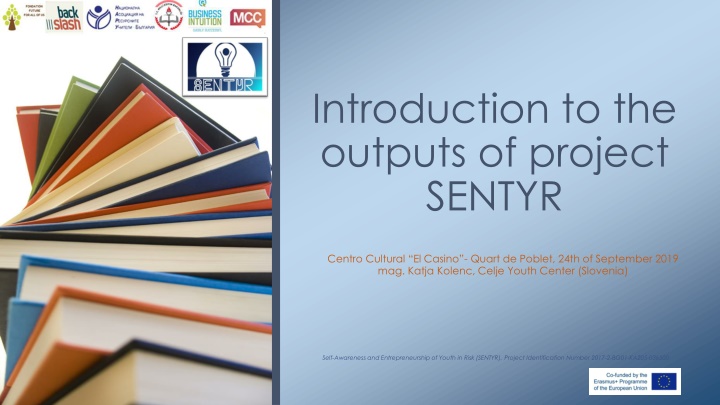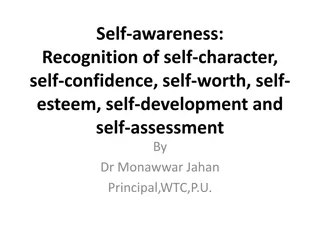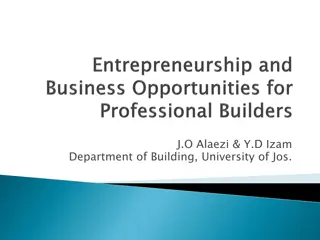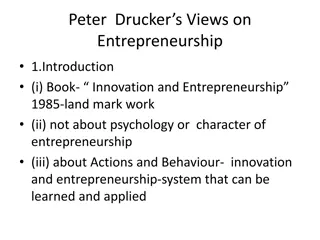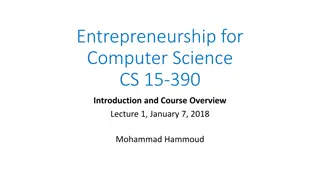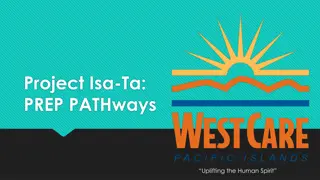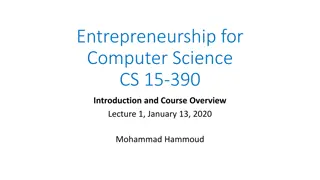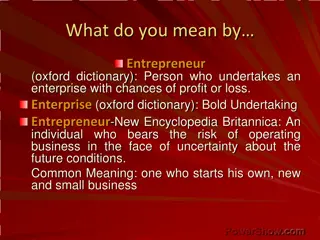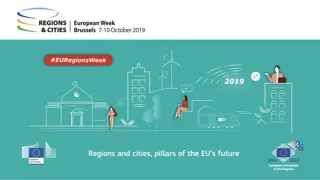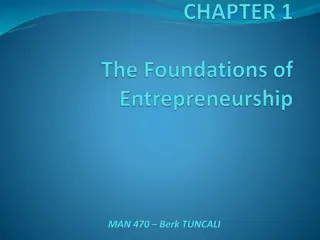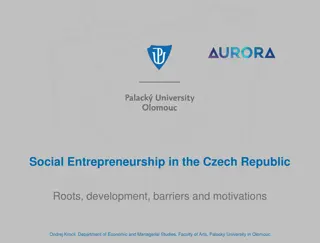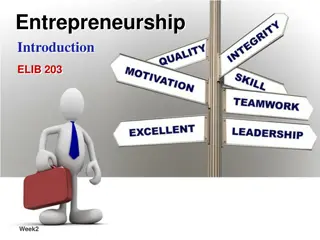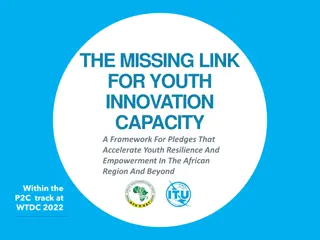Youth Empowerment through SENTYR Project: Enhancing Self-Awareness and Entrepreneurship
Explore the outputs of the SENTYR project focusing on empowering at-risk youth through self-awareness and entrepreneurship. The project aims to re-engage young individuals at risk of social exclusion by enhancing youth workers' capacities and leveraging innovative methodologies. From addressing needs of vulnerable youth to evaluating training processes and theories on resiliency and motivation, the project equips stakeholders with effective tools to support youth development.
Download Presentation

Please find below an Image/Link to download the presentation.
The content on the website is provided AS IS for your information and personal use only. It may not be sold, licensed, or shared on other websites without obtaining consent from the author.If you encounter any issues during the download, it is possible that the publisher has removed the file from their server.
You are allowed to download the files provided on this website for personal or commercial use, subject to the condition that they are used lawfully. All files are the property of their respective owners.
The content on the website is provided AS IS for your information and personal use only. It may not be sold, licensed, or shared on other websites without obtaining consent from the author.
E N D
Presentation Transcript
Introduction to the outputs of project SENTYR Centro Cultural El Casino - Quart de Poblet, 24th of September 2019 mag. Katja Kolenc, Celje Youth Center (Slovenia) Self-Awareness and Entrepreneurship of Youth in Risk (SENTYR). Project Identification Number 2017-2-BG01-KA205-036500
SENTYR Methodologies Needs addressed: reaching out to young persons, who left traditional forms of education and are endangered by complete social isolation through youth workers Aim addressed: To enhance the capacities of youth workers and youth work communities to influence and re-engage youth to take active position for their personal and professional development.
Evaluation Methodology Methods and instruments to identify, asses and evaluate the training needs of young people in risk of social exclusion; - Why do I need to evaluate? - When should I evaluate? - What can I do with the evaluation? - What methods can I use? Case studies examples of the evaluation process;
Theory Defining At-Risk Youth Social ecological model - influential factors Holistic Perspective - importance of looking beyond problem behaviors towards strengths and resources that are linked to youth s prosocial behaviors.
Theory RESILIENCY IN YOUTH - positive adaptation in the context of significant adversity MOTIVATING AND ENGAGING YOUTH (Enhancement of Motivation, Hierarchy of Basic and Advanced Human Needs, Identify and Promote Approach Goals IDENTIFYING THE NEEDS OF THE YOUTH AT RISK - Steps for youth workers 1. Contact 2. Assessment of the environment (family, school, friends, relatives) 3. Identification of potential areas of problems 4. Plan 5. Implementation of the steps according to the plan 6. Monitoring
Training Methodology to expand and upskill the training portfolio in the field of self- awareness and entrepreneurship education methods; based on three world known methods: stone composition work, business constellations and narrative approach; effective facilitation, participatory and experiential learning; based on three steps for the personal development of youth workers;
Thank you for your attention If you wish to contact the project partners: sentyr2017@gmail.com
